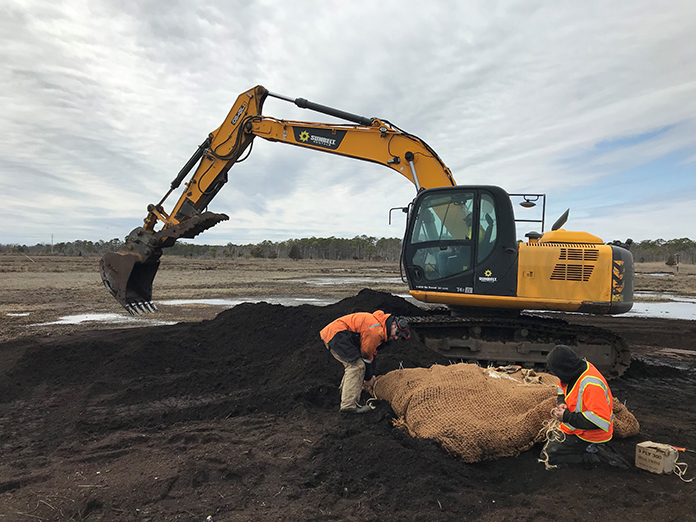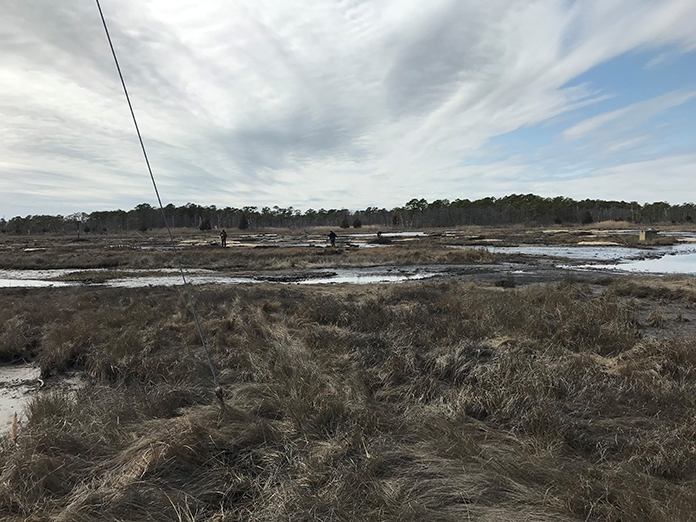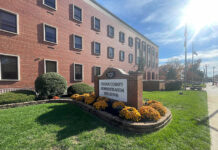
BERKELEY – An expanse of marsh bordering the Barnegat Bay at Good Luck Point has been in decline, but local ecologists are hoping to turn that trend around.
“These marshes are in the worst condition,” said Joseph Smith, a wildlife biologist with U.S. Fish and Wildlife. He works out of the Edwin B. Forsythe National Wildlife Refuge and on one recent week his job site was the land near the old abandoned AT&T building. He and a crew were planting spartina, a grass the thrives in marshes and is cultivated to curb erosion.
Due to how low the area is, it is more sensitive to environmental changes, whether it comes from tidal flows or sea level rise or other situations, he said.
“Thirty years ago, all this mud was grass,” he said, motioning to the muddy area.
The plan is raise the ground a bit so that the vegetation can take hold, and thereby protect the species that frequent the area. U.S. Fish and Wildlife wanted the higher elevation to support birds like the black rail and salt marsh sparrow.
After Superstorm Sandy, waterways needed to be dredged because of all the debris and sand that wound up in the water. Clean dredge spoils were used to build up the marsh. “Dredge material was a nice solution because people wanted to get rid of it,” he said.
They had attempted to grow spartina, but it didn’t grow as well in the dredge spoils. However, it grew well in leaf waste compost.
Last year, they tested it with a small sample. It not only made it through the winter but it looks great.

Therefore, the ecologists spent several days placing leaf waste compost and planting spartina in it. They had 200 mounds, each one about 12 feet by 5 feet, Smith said.
This work is still considered a pilot project. It’s not going to completely return the marsh into the thriving ecosystem all by itself, but it’s a step in the right direction.
He’ll be able to record these results and share them with colleagues who are also facing similar situations in their locations. They can share information on what works and what doesn’t.
An Ocean County official said the county is assisting the U.S. Fish Game and Wildlife in the restoration of the marsh.

Last year, the Ocean County Department of Solid Waste Management provided a small amount of the county’s leaf compost for the spartina restoration project. It was a trial to see what would result in the best growth. It turned out that the section where the county’s leaf compost was used grew the best.
U.S. Fish and Wildlife then asked if the County could provide about 400 cubic yards more of leaf compost to use for this year’s restoration effort, which was being provided free of charge, they said.







